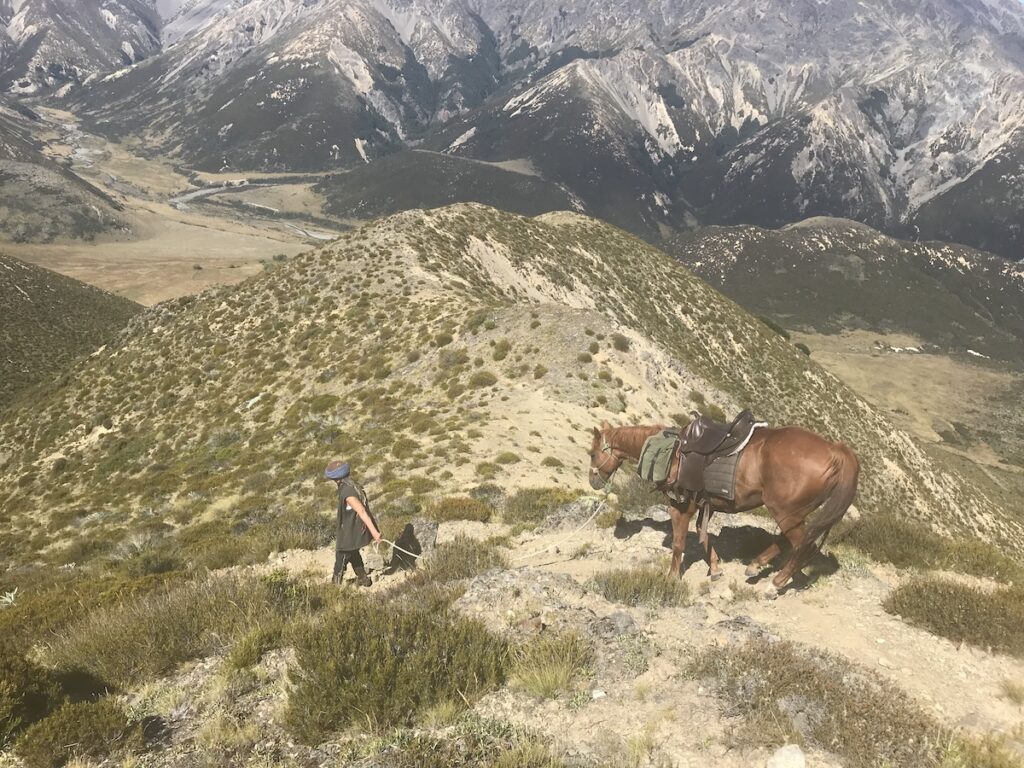HEALTH & SAFETY
IN THE HILLS

Route Planning
Many of the routes are well marked, making them safe for riders trying out mountain country riding for the first time, however, high country trekking is not the same as country riding. Take a note of difficulty level and don’t be tempted to try a route that is beyond you and your horse’s ability.
If you are inexperienced, talk to someone who has been there or plan a trip with them.
Learn to read a map esp topography and vegetation and always take one with you.
Most people like to ride 4-6 hours a day. Don’t rush – make sure you have enough time. Plan places to rest and graze at least 3 times during the day. Think about where you might stop for lunch – rest for an hour in the middle of the day so your horse can graze. Consider where you will stay overnight and contingency options in case of bad weather.
If mid-summer, plan to ride early morning and late afternoon. Rest in the heat of the day.
Being Prepared for the Weather
Always check the weather forecast before you set off – the MetService 3-day forecast is usually pretty accurate. The weather can change quickly between hot and very cold at any time of the year so always carry warm and waterproof clothing.
Nor’west weather which is hot and dry on the Canterbury Plains usually means damp cool weather in the mountains. Severe Nor’westers can even bring snow. Note that the High Country behind Hanmer Springs is all above 800 m and some routes are at an altitude of more than 1000 m. It can freeze 300 days a year.
If it is raining, be aware that river levels may be up, meaning that you can’t cross the Waiau river or go through the Boyle Gorge. Sometimes even the Edwards and the Stanley Rivers become impassable.


Communication
There is no consistent mobile phone coverage beyond Jacks Pass, although recently cell towers have been erected at St. James Homestead and Lake Tennyson. It is recommended that at least one person in your party carries an Emergency Position Indicating Radiobeacon (EPIRB) or Personal Locator Beacon (PLB). Carry it on your body, not on your horse, just in case the two of you part company. More information, including hire outlets for PLBs, is available here.
The Hanmer Springs Horse Riders have a Personal Locator Becaon for hire:
$15 – 1 day
$30 – 3 days
$40 – 1 week
$70 – 2 weeks
Please contact Mary Holloway for hire on
0274 983 764
Tell Someone Your Plans
It may save your life. Although most trips go without a problem, you need to be fully prepared so that if the unexpected happens there are appropriate measures in place to recognise there is a problem, alert the appropriate authorities and, if necessary, enable rescuers to find you quickly.
The New Zealand Outdoors Intentions process (endorsed by New Zealand’s search and rescue agencies) provides 3 simple options which enable you to ‘tell someone’ all the details about your trip into the outdoors.


Avalanche Risk
Maling Pass can be affected by avalanches in spring/early summer when warmer temperatures or rain make the snow unstable. Even if you cannot see snow from the track there may be enough snow out of sight on upper slopes to form an avalanche that could reach the track. DOC advises all visitors to consider carefully the class of avalanche terrain they might be going into. Formal avalanche alerts are available but the closest forecast area is Nelson Lakes. While this is further north than the St James, it may be worth checking before you go.
Contingency Planning
Thinking about what can go wrong and how you might deal with it is a valuable part of planning. Be prepared to change your plans or turn back. Listen to your horse.
Here’s some contingency suggestions:
- Take an EPIRB or similar device
- Tell someone your plans and stick to them, esp your home date
- Take spare shoes or if you can’t put them on, at least one front boot
- Think about what you will do if the weather turns
- Take a tent or fly in case you can’t get to the hut
- Take a decent rope to tie a high line in case there is no paddock
- Take an extra day or two rations
- Take electrolytes for your horse
- Think about what to do if your horse gets loose and heads off without you
- Be prepared to walk your horse home


Turning Back
Turning back is always an option and should be taken when:
- Someone is sick or injured
- Your horse is unwell /lame
- Lost shoe which can’t be replaced and you have no boot
- Heavy rain with a big river crossing ahead of you, unless you have resources to hunker down until the river goes down
- You are out of your depth
- You forgot an important piece of kit or your waterproof gear is inadequate






